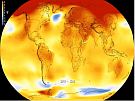For help and more information about LEARNZ videos, go to Help with Videos in the LEARNZ Support section.
Video question sheet - Word (31k) | PDF (217k) | Google Doc to use for each video (based on SOLO Taxonomy).
This trip is also on Google Earth!
The LEARNZ team has created this field trip using Google Earth’s 3D mapping technology. Go to placemarks to explore key locations. Watch video, view images and meet experts at each stop.
Experience this trip on Google Earth >
Tuesday 17 March
1. The Great Woollen Blanket
You are at Victoria University with climate change scientist Professor James Renwick. In this video James answers the questions: What is climate change? and Where are all the greenhouse gases coming from?
2. Fossil Fuels and the Greeenhouse Effect
You are still at Victoria University. Now meet Professor Dave Frame. Dave explains how Earth is being overwhelmed with greenhouse gases and why society relies so heavily on fossil fuels.
3. Watching the Ice Melt
You have travelled to NIWA/Taihoro Nukurangi. NIWA stands for National Institute of Water and Atmospheric Research. In this video you meet climate expert Gregor who explains how weather stations all over the country collect data over many years that give a picture of a region’s climate. This can also show how that climate might be changing over time.
4. Gordon's Gases and other Scientific Observations
Visit NIWA's scientific laboratory and find our what Gordon the scientist has found out about measuring and analysing carbon dioxide. Find out about CO2 fingerprinting to identify the sources of CO2.
August Videos
1. Schools Strike for Climate
Sorcha and Aurelie are student climate activists. We meet up with them in Otaihanga Domain in Waikanae to talk more about this climate change movement and hear their thoughts on positive climate change action.
2. Rising Sea
The Mana Tide Gauge in Porirua is one of many tide gauges around the country. These instruments can help us know when high and low tides are and the heights of these tides. But data collected from these sites can also show scientists patterns in tidal movements which indicate sea level rise.
3. Collecting Air Samples at Baring Head
Scientists have been monitoring changes in the air over Baring Head since 1972. Gordon Brailsford talks about the specialised equipment they use here that automatically detect what gases are present and in what quantities.
4. CO2 Bag Test at Baring head
Gordon Brailsford has a clever device which can detect changes in CO2 levels. It can also highlight the important role that plants play in the CO2 equation.




